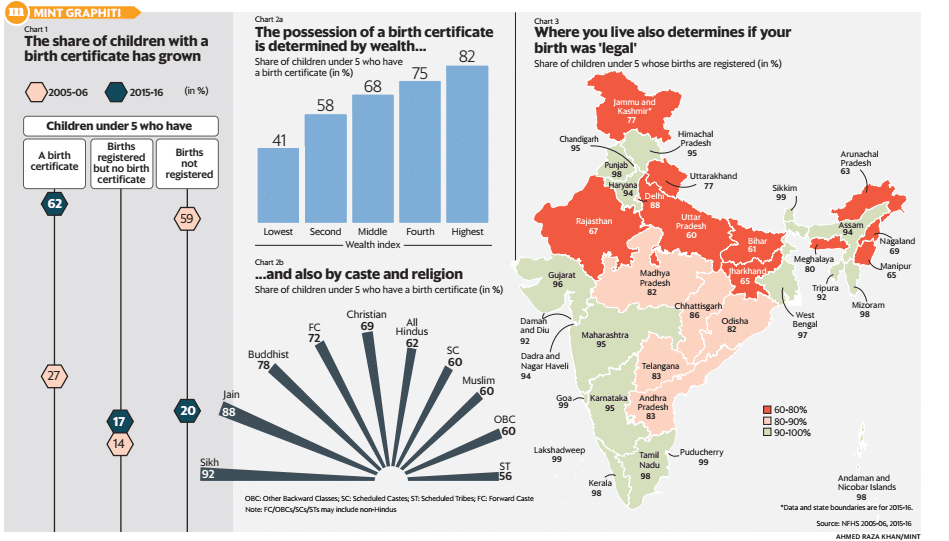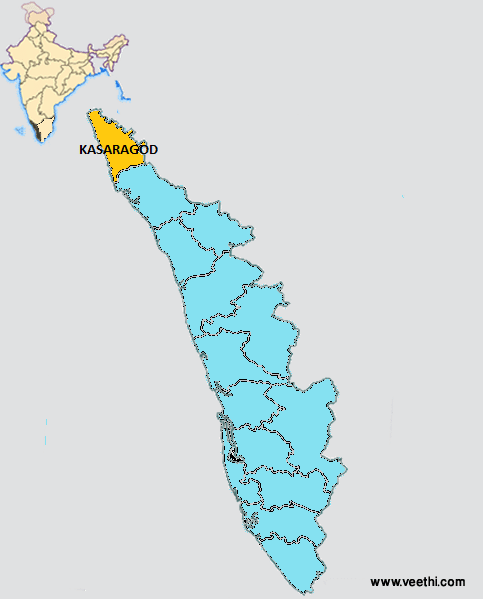Contents
- The Mask of Anarchy
- India’s poor are also Document Poor.
- India’s Labour force’s concerns with a new deal
- A case for including Tulu in the Eighth Schedule
THE MASK OF ANARCHY
Why in news?
- Jawaharlal Nehru University (JNU) in New Delhi was attacked by masked mob on 5th January 2020.
How was it attacked?
- The mob ransacked hostels and grievously wounded students, professors and staff, going about it all in methodical madness for several hours
What were the security personnel doing?
- Not a single attacker was detained by the Delhi police, deployed in large numbers outside the campus
Nationwide protests
- Following the masked attack on JNU, students from all over India, have jumped on to the streets and showing anger against the violence.
More about JNU
- JNU is one amoung the premier institutes in the nation and is being targeted since political dispensation changed in 2014
- JNU recruits from India’s vast diversity, and offers its students the best opportunity to develop critical thinking and excel in their chosen paths of life
INDIA’S POOR ARE ALSO DOCUMENT-POOR
Why in news?
Document-driven processes such as the proposed National Register of Citizens are likely to place the heaviest burden on Adivasis and Muslims
Details
- Official data suggests that even at an all-India level, when it comes to paperwork, the poor and marginalized are most likely to be further marginalized by any process that demands legacy data (which prove ancestry) or documentation.
- Better educated parents and those who are better off are more likely to get their children a birth certificate
- According to the previous round of NFHS conducted in 2005-06 round, just 41% of children under the age of five had their births registered with the civil authorities then, and just 27% of children under the age of five had a birth certificate.
- According to the RBD Act, any birth which has not been registered within one year of its occurrence can be registered only on an order made by a magistrate of the first class or a Presidency Magistrate and on payment of a penalty.
- This suggests that for older generations, the chances of having or obtaining a birth certificate is quite low compared to younger persons.
- Women with greater autonomy—those with better control over their own mobility and some access to resources—were more likely to be able to take on the travel and direct and indirect costs that might be involved in the birth certification process.

INDIA’S LABOUR FORCE’S CONCERNS WITH A NEW DEAL
- Labour law reforms is now back on the agenda, primarily because it is one of the unkept promises and also the private investment has stalled and the corporate sector repeatedly underlines archaic labour laws as a major impediment
- More than 90% of India’s labour force works in the informal and unorganized sector.
- Unemployment, both for the unskilled worker and the educated youth, is at a 45-year high.
- Most importantly, the future appears bleak as job losses are imminent, given the lack of new investment, the rise of automation, the near stagnancy of manufacturing activity and a rising trend in hiring contract labour in the formal economy.
- Thus the proposed reform and consolidation of labour regulations raise several important questions related to:
Vulnerable Workers
- Unemployment is at an all-time high, even according to the government’s own surveys
- Wage increase is at its lowest. While the corporate sector will see wage hikes of nearly 10% this year, the agricultural labour market saw a drop in real wages for the first time in recent years
- In India, the protection of social security schemes have been available only to less than 10% of the workforce, which is employed with the formal private sector or work for the government
- A large number of Indians lie at the margins and can easily slip back into poverty when faced with even a single contingency. The number of people who slip into chronic poverty due to one episode of illness, for example, is more than 55 million a year
The proposed Reforms
- Idea is to take the 40 different central labour laws and 100 state laws, and merge them into four codes
- The central government has
the ultimate say in this regard as labour is in the concurrent list in the
Indian Constitution
- The first of these proposed new codes will regulate wages;
- the second will define industrial relations;
- the third will look into occupational safety, health, and working conditions; and
- the fourth, will regulate social security
- The broad goal is to improve and ensure ease of doing business in India.
New and Unique Challenges
- There are huge problems due to increasing inequality and regional differences in paucity of work and employment opportunities. Bihar, for example, has a workforce participation rate (share of those in the working age group actively seeking a job) of less than 28%, while Andhra Pradesh is at 52%
- Differences in wages between different part of the country
- Medical cover makes sense in Himachal Pradesh and in Tamil Nadu where district hospitals work well and provide good quality care. In Uttar Pradesh and Madhya Pradesh, with patchy healthcare facilities, any amount of health cover does not help
Sustainable Solutions
- Realizing that the new economy is not going to generate lots of low-skilled jobs for millions of reasonably skilled and educated youth
- There was a time when an increase of 2% in GDP would see an increase in employment of 1%, exactly as explained by a widely used principle in economics called the Okun’s law. However, Okun had also said that for unemployment to constantly decline, the economy must grow to its potential.
- The Indian economy, with low private capital investment and an inexplicable reduction in demand, has been growing at a rate far lower than its potential
- The responsibility of providing social protection to vulnerable workers lies on these job-delinked innovations that rely on investments in the capital market, on private providers and on large contributions from the state.
A CASE FOR INCLUDING TULU IN THE EIGTH SCHEDULE
- According to the 2001 Census, India has 30 languages that are spoken by more than million people each. Additionally, it has 122 languages that are spoken by at least 10,000 people each. It also has 1,599 languages, most of which are dialects.
- Article 29 of the Constitution provides that a section of citizens having a distinct language, script or culture have the right to conserve the same. Actually, both the state and the citizens have an equal responsibility to conserve the distinct language, script and culture of a people.
- Tulu is a Dravidian language whose speakers are concentrated in two coastal districts of Karnataka and in Kasaragod district of Kerala.

- Kasaragod district is called ‘Sapta bhasha Samgama Bhumi (the confluence of seven languages)’, and Tulu is among the seven. The Census reports 18,46,427 native speakers of Tulu in India.
- Robert Caldwell (1814-1891), in his book, A Comparative Grammar of the Dravidian or South-Indian Family of Languages, called Tulu as “one of the most highly developed languages of the Dravidian family”
- The present day Tulu linguistic majority area is confined to the region of Tulu Nadu, which comprises the districts of Dakshina Kannada and Udupi in Karnataka and the northern part of Kasaragod district of Kerala up to the river Payaswani, or Chandragiri.
- The cities of Mangaluru, Udupi and Kasaragod are the epicentres of Tulu culture
- If included in the Eighth Schedule, Tulu would get recognition from the Sahitya Akademi. Tulu books would be translated into other recognised Indian languages.
- Members of Parliament and MLAs could speak in Tulu in Parliament and State Assemblies, respectively.
- Candidates could write all India competitive examinations like the Civil Services exam in Tulu.





